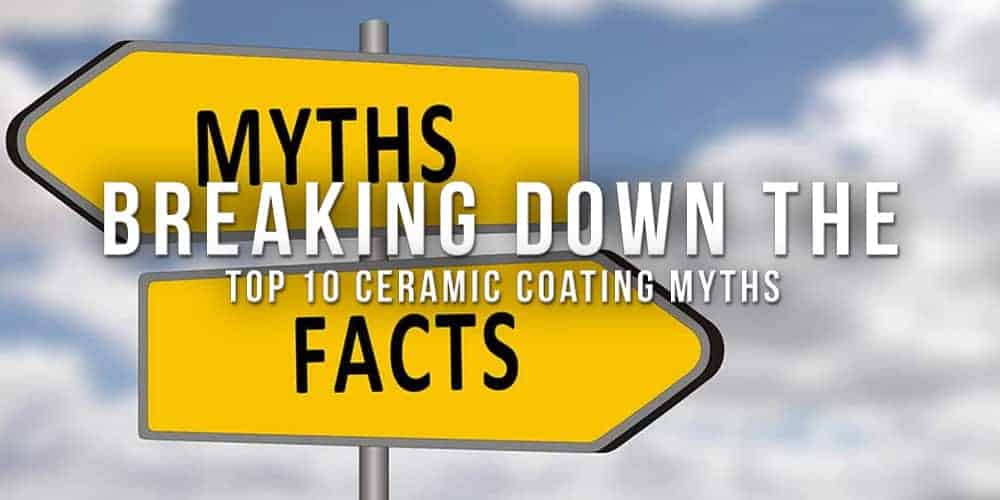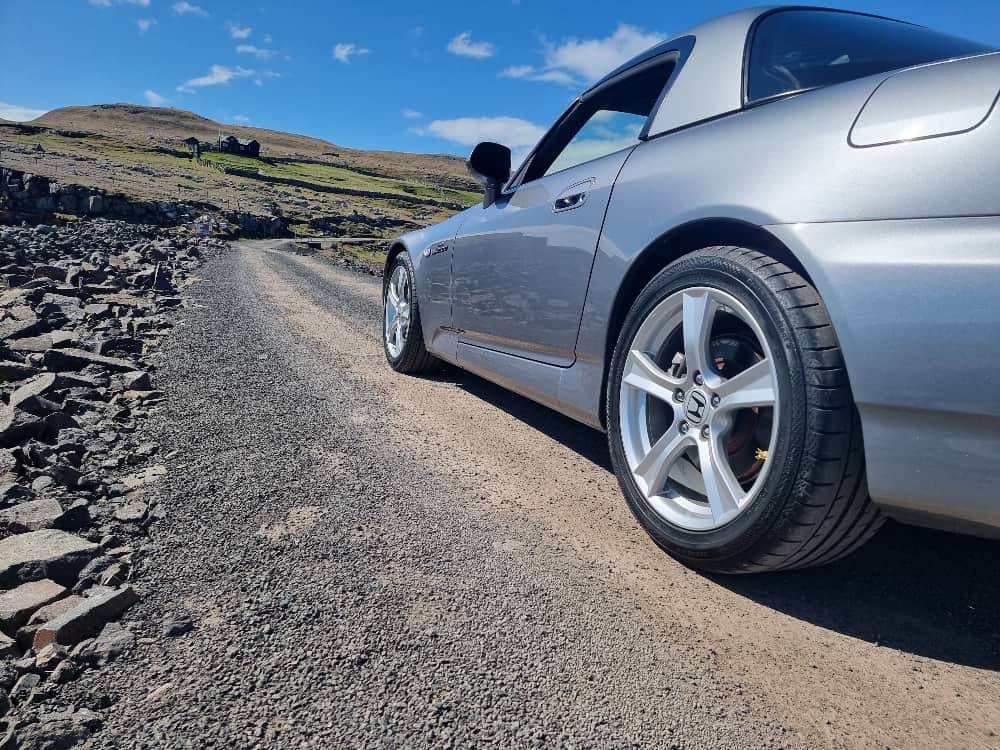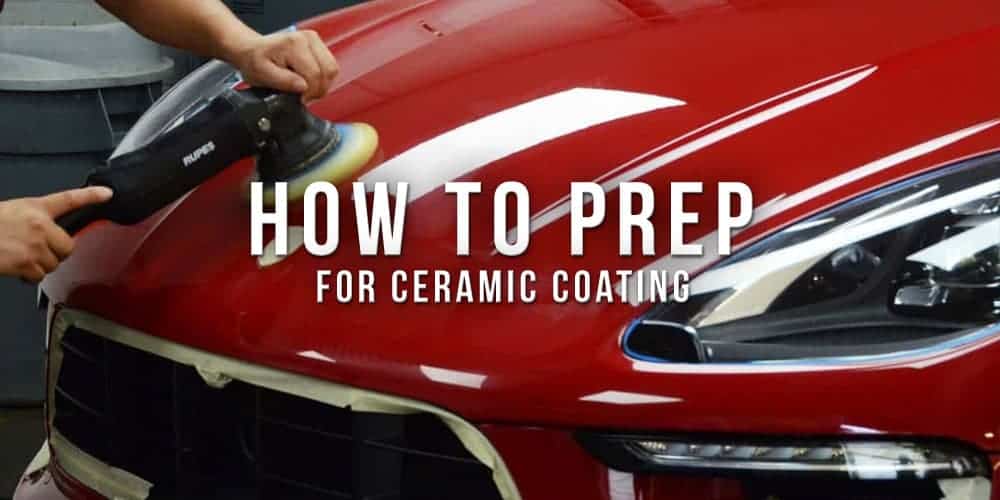Ceramic coatings are absolutely amazing products, especially when they are installed properly, maintained regularly, and contain the right balance of ingredients.
However, like all things man-made and material in this world, even they too have their inherent drawbacks.
Are nano ceramic coatings the greatest invention since sliced bread? That depends on whether or not you have a gluten intolerance. Do you have the patience to sift through all the B.S. online in order the discern whether all of these self-proclaimed “experts” are telling, stretching, or fabricating the truth? Yeah, didn’t think so.
Luckily for you, we like to keep things real over here at AvalonKing. Which is precisely why we’ve decided that it’s high time we discussed the most common (and misleading) ceramic coating myths.
While countless other ceramic coating untruths float around on the web, the following doozies are the ones we encounter the most. For too long DIY enthusiasts forgone the facts in favor of the crude untruths being flung by forum monkeys and self-branded “product specialists,” with the following ten myths being the most prominent.
Myth #1: Ceramic Coatings Protect Against Rock Chips

Arguably the biggest myth (or flat out falsehood), is that if you have ceramic coated your car, it will become resistant to rock chips.
While 9H-rated ceramic coatings, like Armor Shield IX, form an incredibly strong layer of quartz-like protection on a surface once fully cured, the protection created is far more suited to fending-off surface scratches than airborne boulders.
Quick Nerd Note: In order for a product to be impact resistant, it must be pliable enough that it can absorb impacts. This is precisely why products made from flexible polymers, like paint protection films (PPF), remain a crowd favorite in the war against rock chips.
Myth #2: Ceramic Coatings Cannot Be Harmed By Chemicals

Chemicals like degreasers, bug and tar removers, and even high strength alcohol prep solutions may not ruin a nano ceramic coating upon contact, but if allowed to linger, will ruin even the strongest ceramic coating. Hell, even using the wrong kind of car shampoo can cause a layer of ceramic coating to lose its water repelling capabilities, making the coating appear hazy.
Will it bubble-up and require immediate removal upon contact? Unless you just dumped battery acid all over your car’s hood (which we do not advise doing, EVER), probably not.
In order to remove most chemicals from a ceramic coated surface, use a high-quality ceramic coating maintenance shampoo, a plush chenille wash mitt, and the two-bucket hand-wash method to clean the surface. Follow this with ample amounts of rinse time, and a quick hand-drying with a quality microfiber towel for a speedy recovery that is devoid of hard water spots.
Quick Tip: Regardless as to what kind of chemical comes into contact with a ceramic coating, they are all prone to clogging the pores found within the coating. This is precisely why a high-end wash mitt and a balanced, ceramic coating friendly shampoo should be used, as they will clear-out any chemical residue that may be left behind after the initial wash.
Myth #3: Ceramic Coatings Are Self-Healing

Ceramic coatings are not flesh and bone. They will not mend themselves if a door ding, rock chip, acid-rich bird turd, or key scratch from a spiteful ex carve their way into a vehicle’s ceramic coated surfaces.
Despite this being fairly common knowledge, a plethora of people still believe (and spread) the fallacy that ceramic coatings are self-healing, and that they magically start mending themselves when they are “heat activated.”
Quick Tip: While it will not repair a completely compromised ceramic coating, a ceramic spray booster/topper can help revive a tired coating by “injecting” it with fresh SiO2 microparticles. As the booster fills-in all of the invisible gaps and pores that have formed on the surface, the coating tightens up, and the product’s hydrophobic beading capabilities are replenished.
Myth #4: Ceramic Coatings Make a Car Fireproof

This next myth really preys upon the gullible, and is more than likely the result of a sick joke, dreamt-up by the jackasses behind the “Tide Pod Challenge” from a few years back. Remember the video of that idiot pouring lighter fluid all over his freshly ceramic coated car and then setting it on fire? Yeah, don’t do that.
While everything may appear fine on film after the massive fireball of doom dies down, there’s more to this theatrical show than a ceramic coating preventing a flame from destroying a car’s clear coat.
While nano ceramic coatings are fairly good at resisting heat, with a sustained threshold of 440° Fahrenheit being the maximum level of exposure, fighting flames is not what this product is engineered around.
So no, ceramic coatings do not make a car fireproof, and therefore should not be applied on high temperature surfaces. Leave the hot surfaces to the high-temp ceramic coating paint products, and let the nano stuff work its magic on everything else.
Myth #5: Ceramic Coatings Last Forever

Regardless as to whether you opt for a professionally installed ceramic coating, or decide to take the DIY path, chances are the product you have selected comes with some sort of warranty. These warranties can range anywhere from a few months to a few years, but never do they say that the coating will last indefinitely…

Although a well maintained nano ceramic coating has the ability to provide protection and shine for years on end, especially if routinely rejuvenated with an SiO2 ceramic booster, it will eventually begin to fail. You can expect to receive a substantial 2–5 years of protection from Armor Shield IX, whereas the jury remains out in regard to everything else on the market.
Myth #6: Ceramic Coatings Hide Blemishes

Do you know what hides paint and clear coat blemishes really well? Vinyl wrap. Why? Because it covers-up whatever it touches with a layer of vinyl that you cannot see through.
Ceramic coatings on the other hand, are completely transparent, and once allowed to fully cure, enhance the depth of whatever hard surface they have been layered atop. So if you’ve got something ugly sitting on that clear coat, a layer of ceramic coating is only going to make it all the more noticeable.
Quick Tip: Nano ceramic coating play extremely well with vinyl wrap. So if you have some surface blemishes you want to hide on your ride, get it wrapped, and then apply a ceramic coating on top. This will not only help protect your vinyl wrap job, but it will also add a glossy layer of shine to the surface, that becomes quite subtle when applied to matte vinyl.
Myth #7: Ceramic Coatings Prevent Water Spots

Let’s make one thing abundantly clear: A ceramic coating will repel water, but it will NOT prevent the formation of hard water spots. Even with all of its water-repelling super powers on tap, a nano ceramic coating cannot whisk away every little bead of water, and as those beads of H2O dry, water spots begin to form.
On the bright side, ceramic coatings do make water spot removal a hell of a lot easier, regardless as to whether it is soap-based, chemical-based, salt-based, grime-based, or some combination of all four. This is especially true on glass surfaces and on clear plastics like headlight housings, where water spots can be quite noticeable.
Myth #8: Ceramic Coatings Are Difficult to Apply

Unlike the ceramic coating preparation phase, the act of applying a DIY nano ceramic coating product, like Armor Shield IX, swiping and buffing are the primary things that must be done. No power tools, no blending of formulas, no intense scrubbing, just a simple apply and wipe-away approach.
There’s a reason why DIY enthusiasts swear by this stuff, and often recommend it to everyone they know. Ceramic coating application truly is so easy, that anyone with opposable thumbs can do it, including that hairy gorilla of a neighbor that lives across the street from you.
Myth #9: Ceramic Coated Vehicles Don’t Need Car Shampoo

While a ceramic coated vehicle will reject the majority of the muck thrown at it, it cannot roundhouse kick everything into outer space. Last we heard, Chuck Norris already had that occupation covered, which is precisely why automotive shampoo is so important.
Removing stubborn debris and sticky contaminants like tree sap can be achieved by using a robust ceramic prep shampoo, as it will play nice with the protectant, and guarantee that hydrophobic properties continue to function.
For everything else, washing your ceramic coated vehicle every two weeks with a pH-balanced car maintenance shampoo that’s been specifically engineered to work with SiO2 based protectants should be more than sufficient.
Myth #10: New Cars Don’t Require Prep Work

The person who invented this myth probably has never run their hand over a new car’s paintwork. If they had, they would realize that there is no such thing as a completely clean car. Even a brand-spanking new automobile comes with its own complimentary collection of invisible contaminants, and every last one of them wants to make your ceramic coating shit the bed.
Regardless as to how new the vehicle may be, or how pristine it may appear, all it takes is the right amount of residue or dust, for a ceramic coating install to go from super smooth, to a massive mistake.
Prep work is the key to obtaining and maintaining a ceramic coating’s performance and longevity perks, so be sure to hit that fresh sled of yours with a clean microfiber towel and an IPA wipe-down prior to install. Failure to do so could result in having to strip the entire vehicle, and starting the application process all over again.
Parting Shots

No matter what you drive, nano ceramic coatings remain a great way to keep a vehicle clean, all while improving shine, and adding protection.
However, before you make that investment, be sure to contact the product manufacturer directly, as they will be able to dispel whatever misinformation has been thrust upon you over the years. You’ll also be able to find a lot of the truths you seek by referencing the company’s online “Help Center,” or by chatting with a customer care representative in real time.
So give us a shout if you require assistance or have any burning questions that must be answered. Don’t believe everything you find online, because unless it’s coming straight from the source, there’s a chance that it’s just another ceramic coating myth looking for a fresh host to help spread its misinformation.













6 comments
Mike Knowles
I’ve recently bought a 2nd hand car and recently noticed that the previously applied ceramic coating has gone onto the glass windscreen, limiting visibility slightly. How can I remove the coating from the windscreen? Thanks.
I’ve recently bought a 2nd hand car and recently noticed that the previously applied ceramic coating has gone onto the glass windscreen, limiting visibility slightly. How can I remove the coating from the windscreen? Thanks.
Dale Pearl
Hello Mark!
You have 2 options
1) the quick and easy
do a basic prep of wash, dry, clay, and IPA wipe down and then reapply!
2) the best results
Do the basic prep above but after claying do a round of polishing to remove the remains of coating and then IPA wipe down. This will give you the best results!
Hello Mark!
You have 2 options
1) the quick and easy
do a basic prep of wash, dry, clay, and IPA wipe down and then reapply!
2) the best results
Do the basic prep above but after claying do a round of polishing to remove the remains of coating and then IPA wipe down. This will give you the best results!
Mark Potts
Had my coating for almost a year. Still looks great. Will I need to re-apply the coating and does the old one need removal? Do I just clean and prep over the old coating?
Had my coating for almost a year. Still looks great. Will I need to re-apply the coating and does the old one need removal? Do I just clean and prep over the old coating?
Tim Charlet
Hi Mike:
Thanks for contacting us today. If a ceramic coating has been scratched, it’s best to remove it by using a light polishing compound, washing completely, spraying an IPA solution, then reapply the coating.
Hi Mike:
Thanks for contacting us today. If a ceramic coating has been scratched, it’s best to remove it by using a light polishing compound, washing completely, spraying an IPA solution, then reapply the coating.
Mike
How can I remove light scratches from a ceramic coated car finish? What product is recommended?
How can I remove light scratches from a ceramic coated car finish? What product is recommended?
Michael Becerra
Great article, very informative..
I’m receiving a model 3 in about 4 weeks and plan on applying IX right away.
Considering it’s delivered shortly after being built, would I be safe by washing > air drying > clay glove > alcohol wipe down > applying product ?
Also can IX be applied to the windshield, windows, wheels, calipers and the piano black center console in the model 3?
Great article, very informative..
I’m receiving a model 3 in about 4 weeks and plan on applying IX right away.
Considering it’s delivered shortly after being built, would I be safe by washing > air drying > clay glove > alcohol wipe down > applying product ?
Also can IX be applied to the windshield, windows, wheels, calipers and the piano black center console in the model 3?